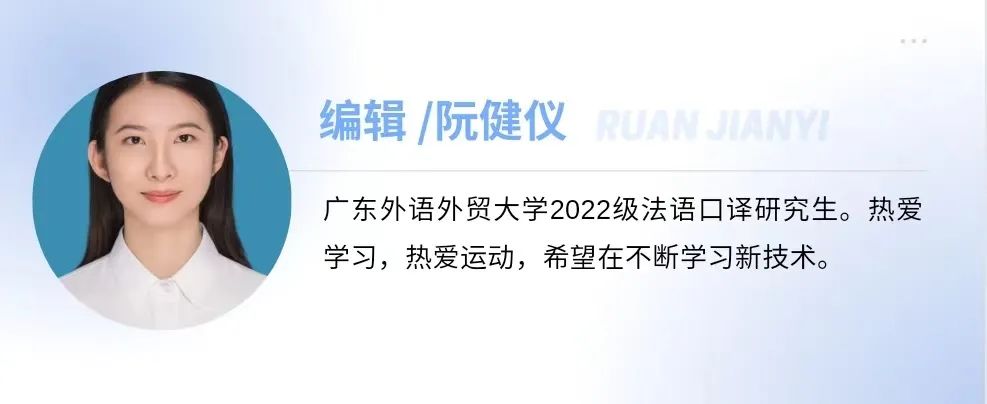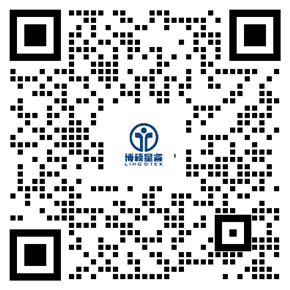Translation Studies
Volume 16, Issue 2 (2023)
注:中文摘要为机器翻译,于2023年6月18日调用DeepL翻译引擎,未介入译后编辑,译文仅供参考。
Articles
Translating constraints
Kobus Marais
Abstract
This article considers the work that goes into the emergence of social-cultural reality. It uses the notion of constraints to think about the non-physical domain of ideas, which are usually studied in the humanities. Constraints on the release of energy are required in order to perform work, which means that work and constraints stand in a circular relation to one another. The article delves into “the absential” as a constraint, in other words, the ways in which that which does not exist or that which could have existed constrains the emergence of social cultural reality. It argues that creativity is linked to the imposition of constraints, and hence argues that it is constraints that get translated in processes of translation, whether interlingual, intralingual or intersemiotic. The article considers the interplay between reality and its adjacent possible for thinking about the role of translation in the emergence of society-culture.
本文考虑了社会文化现实的出现所涉及的工作。它使用约束的概念来思考思想的非物理领域,这通常是在人文学科中研究的。为了进行工作,需要对能量的释放进行约束,这意味着工作和约束彼此之间是一种循环关系。文章深入探讨了作为制约因素的 “缺席”,换句话说,不存在的东西或可能存在的东西是如何制约社会文化现实的出现的。文章认为,创造力与约束的强加有关,因此认为在翻译过程中,无论是语际、语内还是语间,得到翻译的都是约束。文章认为现实与其相邻的可能之间的相互作用,是对翻译在社会-文化的出现中的作用的思考。
Keywords: Machine translation, computer programming, reverse engineering, brain as computer, cognitive science, emergent properties
关键词:机器翻译、计算机编程、逆向工程、作为计算机的大脑、认知科学、新兴属性
Implications of computer code translation for translation studies
James St. André
Abstract
This article explores the intersection of the translation of machine code and translation of natural languages. Starting with the deep-seated metaphor the brain is a computer, this study demonstrates the extent to which computer science, cognitive science, linguistics and translation are intertwined. The parallels between difficulties of translating computer code and natural languages point to the failure to find a workable interlingua and the importance of complexity studies and emergent properties for both fields. Thus translation studies would do well to examine more carefully the extent to which a computational understanding of the brain has shaped basic concepts and approaches to translation. At the same time, homologies between the market for translation of computer languages and natural languages and the need in programming to be more sensitive to the needs of non-English speakers suggests that translation studies has much to offer to computer science.
本文探讨了机器代码的翻译和自然语言的翻译之间的交集。从 “大脑是一台计算机 “这一根深蒂固的隐喻开始,这项研究表明了计算机科学、认知科学、语言学和翻译相互交织的程度。翻译计算机代码和自然语言的困难之间的相似之处指出了未能找到一个可行的跨语言,以及复杂性研究和突发属性对这两个领域的重要性。因此,翻译研究最好能更仔细地研究对大脑的计算性理解在多大程度上塑造了翻译的基本概念和方法。同时,计算机语言和自然语言的翻译市场之间的同源性,以及编程中对非英语使用者的需求更加敏感的需要,表明翻译研究对计算机科学有很多贡献。
Keywords: Work, constraint, absential, adjacent possible, modal possibility
关键词:工作、约束、缺席、相邻的可能、模式的可能
Translation as meaning negotiator
Sergey Tyulenev
Abstract
本文讨论了翻译的意义制造功能。三个案例研究表明,翻译是如何完成其对抗符号学-语义学熵的工作的。前两个案例表明,翻译可以通过在术语和印象类型之间的摇摆,将不太熟悉的东西变成比较熟悉的东西来对抗这种熵。这两个案例一方面观察了作为符号学领域的音乐和生物化学之间的翻译,另一方面也观察了语言。第三个案例研究探讨了翻译如何在语言和绘画之间协商意义。在所有这些案例中,翻译完成了它的负熵工作,但它是通过或多或少复杂的意义协商来完成的。
Keywords: Translation, meaning, semiotic, music, fungi, painting
关键词:翻译、意义、符号学、音乐、风趣、绘画
From painting to novel: Claude Simon’s Triptych
Zarja Vršič
Abstract
从一种艺术媒介到另一种艺术媒介的转换概念位于几个不同学科的交叉点,如改编研究、翻译研究、中间媒介研究和比较文学。克劳德-西蒙的小说《三联画》(Triptych)中研究了一个不太常见的转换的例子,即绘画到小说的中间媒介翻译。中间翻译在这部新罗马小说中的作用是通过诠释学和对话学的视角来描述的,这两种方法已经在翻译研究中得到了富有成效的应用。本文认为,首先,Triptych中绘画向小说的转移是中介翻译的一个例子,可以用翻译研究的方法来研究;其次,只有认识到西蒙作品中中介翻译的使用,才能充分理解他的艺术实践;第三,反过来,翻译研究可以通过考虑中介翻译等非语言间的转移,从扩大其传统范围中受益。
Keywords: Intermedia translation, Claude Simon, Nouveau Roman, Triptych, Francis Bacon
关键词:跨媒体翻译、Claude Simon、Nouveau Roman、三联画、Francis Bacon
On the cross-disciplinary conundrum: The conceptualization of translation in translation and journalism studies
Roberto A. Valdeón
Abstract
This article discusses the difficulties that the divergent conceptualizations of translation in journalism and translation studies pose to conduct inter-disciplinary research into the role of translation practices in journalistic production. It is divided into four sections that review four concepts, namely domestication (in connection with localization), transediting, gatekeeping and convergence. The first two have been widely discussed in translation studies in relation to a variety of genres, while the latter have been central to journalism studies research. The article also discusses the usefulness of these four concepts for the study of journalistic translation practices from the perspective of both translation and journalism studies.
本文讨论了新闻学和翻译研究中不同的翻译概念给对翻译实践在新闻生产中的作用进行跨学科研究所带来的困难。文章分为四个部分,回顾了四个概念,即本土化(与本地化相关)、翻译、把关和衔接。前两者在翻译研究中被广泛讨论,与各种体裁有关,而后者则是新闻研究的核心。文章还从翻译和新闻研究的角度讨论了这四个概念对新闻翻译实践研究的作用。
Keywords: Journalistic, translation, domestication, transediting, gatekeeping, convergence
关键词:新闻翻译、本土化、转编、把关、融合
Integrating museum studies into translation studies: towards a reconceptualization of the source text as sensory experience in museum audio description and the notion of experiential equivalence
Marina Manfredi & Chiara Bartolini
Abstract
This article focuses on museum audio description (AD) as a modality of intersemiotic translation (IT) primarily addressed to people with visual impairments. Still at an early stage of development in terms of both academic research and professional practices, museum AD lies at the crossroads of a variety of disciplines, such as translation studies (TS) and museum studies (MS). The aim of this contribution is to suggest a reconceptualization of traditional notions in TS (source text and equivalence) in the context of museum AD and encompassing the translational phenomenon per se. Theoretical considerations from MS and specific guidelines for museum AD practices will offer cross-disciplinary insights to redefine such concepts and reflect upon translation as a semiosic process in which meanings are created, rather than transferred. This article suggests the coincidence in AD of source and target texts as sensory experience and puts forth the concept of experiential equivalence.
本文重点讨论博物馆语音描述(AD)作为一种主要针对视力障碍者的跨文化翻译(IT)模式。在学术研究和专业实践方面,博物馆AD仍处于早期发展阶段,处于各种学科的交叉点,如翻译研究(TS)和博物馆研究(MS)。本报告的目的是建议在博物馆AD的背景下对TS的传统概念(源文本和对等性)进行重新概念化,并包括翻译现象本身。来自MS的理论考虑和博物馆AD实践的具体指导方针将提供跨学科的见解,以重新定义这些概念,并反思翻译作为一个语义学过程,其中意义被创造,而不是转移。本文提出了在AD中源文本和目标文本作为感官体验的重合,并提出了体验性等值的概念。
Keywords: Intersemiotic translation, museum audio description, museum studies, source text, equivalence
关键词:间歇性翻译、博物馆语音描述、博物馆研究、源文本、等值性
Re-interpreting interpreting
Franz Pöchhacker
Abstract
In the face of newly emerging practices and shifting conceptual boundaries in translation and interpreting studies, the article engages with two recent theoretical proposals aiming at a reconceptualization of translation from the perspectives of semiotics and accessibility studies. The biosemiotic theory by Kobus Marais based on Peircean semiotics and Gian Maria Greco’s universalist conception of accessibility grounded in human rights are explored with reference to interpreting, and their theoretical, terminological, professional and academic implications are discussed. In addition, a conceptual mapping of various forms of media access services, including speech-to-text interpreting, serves as a basis for discussing ongoing redefinition efforts in the context of international standardization, highlighting the complex interplay of different stakeholders, including scholars, service providers, service users, and regulators.
面对笔译和口译研究中新出现的实践和不断变化的概念界限,文章讨论了两个最新的理论建议,旨在从符号学和无障碍研究的角度对翻译进行重新概念化。Kobus Marais基于Peircean符号学的生物流行病学理论和Gian Maria Greco以人权为基础的无障碍环境的普遍性概念,在口译方面进行了探讨,并讨论了其理论、术语、专业和学术意义。此外,在讨论国际标准化背景下正在进行的重新定义工作时,以各种形式的媒体访问服务(包括语音翻译)的概念图为基础,突出了不同利益相关者(包括学者、服务提供商、服务使用者和监管者)的复杂相互作用。
Keywords: Interpreting, semiotics, media accessibility, audiovisual translation, speech-to-text interpreting
关键词: 口译、符号学、媒体可及性、视听翻译、语言文字翻译
Reconceptualizing translation and translators in the digital age: YouTube comment translation on China’s Bilibili
Binghan Zheng, Jinquan Yu, Boya Zhang & Chunli Shen
Abstract
A new participatory ecology of translation facilitated by digital technologies has significant implications for understanding translation and translators. This article examines YouTube comment translation on Bilibili in China to reconceptualize translation and translators by taking the Will Smith-Chris Rock confrontation at the Oscars 2022 and the assassination of Shinzo Abe as two illustrative case studies. It demonstrates that Chinese netizens participate in civic engagement and translate verbal and written YouTube comments into a multimodal text with various technological tools. Based on the emergent properties of YouTube comment translation, we argue that translation can be reconceptualized as an assemblage of multimodal resources that reconstitute and extend the original meanings of the source text. We also propose to expand the concept of translators to encompass both human and non-human translators, challenging the anthropocentric bias in translator studies. Finally, a post-humanist approach is suggested to reconceptualize translation and translators in the digital age.
由数字技术推动的新的参与式翻译生态对理解翻译和译者具有重大意义。本文研究了中国Bilibili上的YouTube评论翻译,以2022年奥斯卡颁奖典礼上威尔-史密斯和克里斯-洛克的对峙以及安倍晋三被暗杀事件为例,对翻译和译者进行了重新概念化。它表明,中国网民参与公民参与,并通过各种技术工具将口头和书面的YouTube评论翻译成多模态文本。基于YouTube评论翻译的新兴属性,我们认为翻译可以被重新概念化为多模态资源的组合,重新构成和扩展源文本的原始含义。我们还建议扩大译者的概念,使之包括人类和非人类译者,挑战译者研究中的人类中心主义偏见。最后,建议采用后人文主义的方法来重新认识数字时代的翻译和译者。
Keywords: Concepts of translation and translators, YouTube comment translation, civic engagement, digital age, China’s Bilibili, post-humanism
关键词:翻译和译者的概念,YouTube评论翻译,公民参与,数字时代,中国的Bilibili,后人文主义
The conceptualisation of translation in translation studies: a response
Yves Gambier
Abstract
“Translation” yesterday (in the 1980s and 1990s) was defined in a certain context. Today, in a more globalized and digitalized world, the concept is changing, becoming more fluid while scholars in TS are becoming more nomadic (in their affiliations, and between disciplines). To avoid as much as possible a terminological inflation in TS and a monolithic and static concept of translation, we must consider the socio-cultural context in which we try not only to define our object of investigation but also to clarify the purpose of our definition(s), considering the wide range of translators and interpreters with different status and working with different e-tools. In addition, a historical perspective is needed: two paradigms are changing, sometimes overlapping. Thus, the feeling of confusion.
昨天(20世纪80年代和90年代)的 “翻译 “是在某种背景下定义的。今天,在一个更加全球化和数字化的世界里,这个概念正在发生变化,变得更加流动,而TS的学者们也变得更加游牧(在他们的隶属关系和学科之间)。为了尽可能避免TS领域的术语膨胀和翻译概念的单一化和静态化,我们必须考虑社会文化背景,在这种背景下,我们不仅要努力定义我们的调查对象,而且要明确我们定义的目的,考虑具有不同地位和使用不同电子工具的广泛的翻译和口译人员。此外,还需要一个历史的视角:两种范式在不断变化,有时是重叠的。因此,感觉很混乱。
Keywords: Cross-disciplinarity, digitisation, English as a lingua franca, translation as a polymorphic concept, Translation Studies
关键词:跨学科、数字化、作为通用语言的英语、作为多态概念的翻译、翻译研究
特别说明:本文仅用于学术交流,如有侵权请后台联系小编删除。



